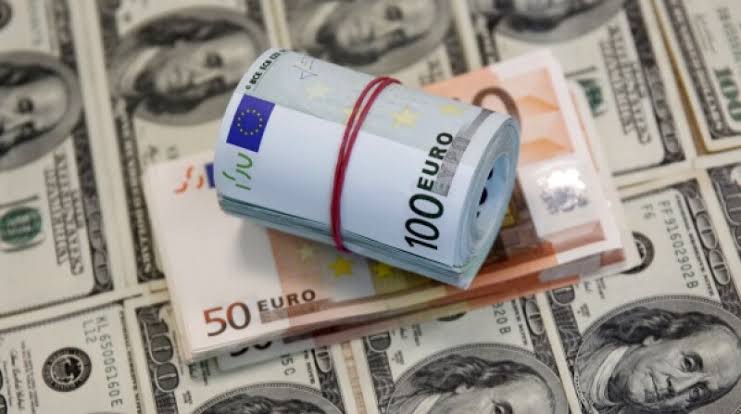Oct 27, 2022
VOT Research Desk
Research and Fundamentals Report
Market Insights, Considerations & Analytics
Today, the European Central Bank (ECB) will reveal its stance on interest rates. According to economists the EUR/USD might move in the direction of 1.02 during the day.
Today’s atmosphere is a little softer, and EUR/USSD has decisively busted out of this year’s bear trend. That may indicate a risk for the EUR/USD to reach 1.0200 on the day.
The euro has not benefited from a hawkish ECB so far this year.
Although the ECB has been unexpectedly hawkish throughout the year, the EUR/USD has often concluded ECB policy days worse. It appears that investors sell off euros using the available liquidity surrounding ECB event risk.
In order to put us back in the bear trend, the EUR/USD would preferably need to fall back below the 0.9920/0.9950 region right away if the release does turn out to be bearish.
Here are the expectations as predicted by the economists and researchers of 15 major banks as the European Central Bank (ECB) is scheduled to announce its decision on monetary policy on Thursday, October 27 at 12:15 GMT.
For the second time in a row, economists anticipate the ECB will increase borrowing costs by 75 basis points. As a result, the deposit rate would be 1.50% and the primary refinancing rate would be 2%.
According to SocGen,
“We now expect another 75 bps hike by the ECB in October and more rate hikes through the spring, for a terminal rate of 3% by the middle of 2023, barring a deeper recession.”We now anticipate a gradual start to quantitative tightening (QT) by mid-2023 as a result of faster rate hikes. However, QT options and communication will require careful evaluation given that the balance sheet plays an important role in maintaining financial stability (see the UK) and preventing fragmentation. Any market volatility or increased fragmentation could be smoothed by initially concentrating on private sector assets, allowing for greater capital key flexibility, and/or accelerating TLTRO reduction.
The “ECB meeting is set to bring another 75 bps rate hike in all three policy rates,” according to Danske Bank. We anticipate that Lagarde will state that the likelihood of the ECB staff’s downside risk scenario from the September projection exercise is increasing, but that she will not provide any significant new policy signals. We anticipate that the ECB will keep raising its policy rates until the beginning of next year. There is a possibility of additional increases occurring if fiscal initiatives support the growth outlook in such a way that inflation remains excessive over the medium term.
ING
states, “A 75 bps hike appears to be a done deal, but the ECB has a lot to do at its meeting in October.”The discussions regarding quantitative tightening are premature, but they will aim to bolster bank liquidity. With the 10Y Bund expected to reach 2.5%, the upside of rates, sovereigns, and money market spreads dominates. The EUR should not be supported by any of this.
Nordea
“We expect the ECB to raise rates by 75 basis points and signal that more hikes will be coming,” “debate when and how to start reducing the ECB’s enormous bond portfolio but place the decision till the Conference and unveil modification to encourage banks to early repayments of the TLTROs and conceivably also provisions to ease the strife in the government bond markets,” and “point to incoming data and the new estimates available in December estimating” are among the predictions made by Nordea.
Commerzbank.
TDS: “We anticipate the Governing Council to raise ECB rates by 75 basis points, bringing the Depo Rate to 1.50%.”It is likely that record-high inflation will continue to dominate discussion at this meeting, rather than weak growth.
“A 75 bps rate hike seems like a done deal,” says Rabobank.In addition, we have raised our expectations for the upcoming meetings and now anticipate that the deposit rate will reach 3% by March.It appears that the ECB is determined to end TLTRO arbitrage. We anticipate that the ECB will attempt to minimize market impact, but the main risks we see are associated with a wider negative €STR-deposit rate spread. Quantitative tightening may be considered, but it is unlikely that any actual plans will be made.
Nomura:
“We anticipate that the ECB Governing Council will increase all three key interest rates by 75 basis points.”The marginal lending rate would be 2.25 percent, the depo rate would be 1.50%, and the refi rate would be 2.00%.
“We expect another 75 bps hike, followed by 75 bps in December, 50 bps in February, and 25 bps in March, reaching a terminal rate of 3%,” according to Deutsche Bank. The press conference will continue to be the main event, and the technical aspects of TLTROs and excess reserves will get a lot of attention.
According to ANZ
“We expect the ECB to raise rates by 75 bps and maintain its hawkish guidance” in the face of rising and broadening inflation. When a 50 bps increase is appropriate might be the topic of discussion. Quantitative tightening will have to be incorporated into the normalization process at some point.
Given the widening trend in regional spreads and the recent turmoil in the gilts market, the ECB will proceed cautiously. We think QT will be a story in early 2023.The control of inflation is essential to the economic stability of the Euro Area. After gas prices dropped, there is hope that the headline HICP will reach its highest point in the coming months. However, wages and core inflation are rising.
Citibank
states, “We expect the ECB to increase the policy rate by 75 bps, bringing the deposit rate to 1.5 percent.”It is likely that more rate increases will be announced.It is probably too soon to make difficult decisions regarding the withdrawal of asset purchases.
BMO
expects a 75 bps increase: the refi rate to 2.00%, the marginal lending facility to 1.50 percent, and the deposit facility to 1.50%.To get to the terminal, this would be the second move in a series; or, to paraphrase President Lagarde, “it’s probably more than two, including this one, but it’s probably also going to be less than five,” as she stated in September.
A growing number of ECB members are speaking more hawkishly. To fulfill its mandate of price stability, the Governing Council will likely be required to front-load more aggressive hikes with headline inflation of 9.9% and core CPI of 4.8% (both records) heading higher. Even the more middle-of-the-road Frenchman François Villeroy de Galhau stated that he expected the ECB to “go quickly” in order to achieve a deposit rate of 2% by the end of the year.
We expect the ECB to deliver another 75 bps increase to its Deposit Rate, bringing that rate to 1.50%,” according to Wells Fargo. We do not anticipate any quantitative tightening implementation beginning before March 2023, and we do not anticipate any quantitative tightening announcement before December.
Crédit Agricol
States –
We expect the Governing Council to deliver a 75 bps hike but to signal that the policy normalization would slow down from here while a potential QT is not imminent.” This is in line with market expectations.From the current levels, this much would necessitate a cautious outlook for the EUR.
BofA says
, “In line with recent communication and market pricing, we expect the ECB to hike 75 bps with a clear signal of more to come.”We argue that it is too soon for quantitative tightening, or QT. However, the language surrounding asset purchase program (APP) reinvestments is likely to change, laying the groundwork for discussions.
Even if the specifics come later, we believe there will be an announcement regarding punitive tiering or modifying the terms of TLTRO (Targeted Long Term Refi Operations).Given market expectations and remaining obstacles, we do not believe the hawkish ECB actions and tone will be sufficient to support the EUR in foreign exchange.









